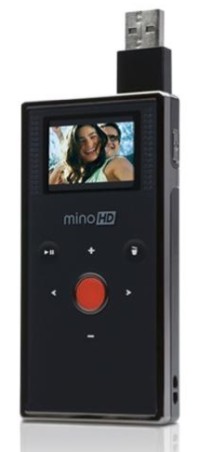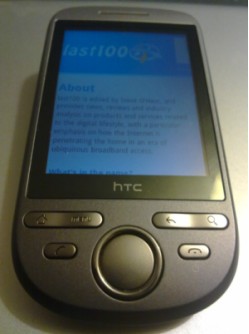 First, a quick confession: I had no intention of reviewing the HTC Tattoo. Why? On paper at least, it’s a poor man’s HTC Hero. Yes it does feature the same HTC Sense UI, which greatly improves on the stock version of the Google-led operating system, but the Tattoo lacks some of the hardware features to match. However, following a mix up with a courier and a serendipitous email from HTC’s PR firm, a Tattoo for review was sent my way.
First, a quick confession: I had no intention of reviewing the HTC Tattoo. Why? On paper at least, it’s a poor man’s HTC Hero. Yes it does feature the same HTC Sense UI, which greatly improves on the stock version of the Google-led operating system, but the Tattoo lacks some of the hardware features to match. However, following a mix up with a courier and a serendipitous email from HTC’s PR firm, a Tattoo for review was sent my way.
What I’ve come to realise in the few weeks that I’ve had the device on loan is that the HTC Tattoo, while not especially exciting in itself, points to Android’s mass-market future, and why rival platforms, along with the plethora of dumb-phone OSes, need to sit up and take notice.
What’s different and/or missing
Screen size. Gone is the Hero’s 3.2 inch screen. Instead, the Tattoo uses a smaller 2.8 inch display. It’s considerably lower resolution too. Down from 320 x 480 (HVGA) to a more feature phone-like 240 x 320 (QVGA) resolution. The most noticeable difference is that web pages and lists require more scrolling because of the reduction in vertical screen real estate. Images also look less sharp. The upside – and this shouldn’t be underestimated for some users – is that the device is smaller and more pocketable. In other words, it feels more like a phone! As a result, it’s a little more comfortable to hold too and that bit easier to operate one handed.
Continue reading »
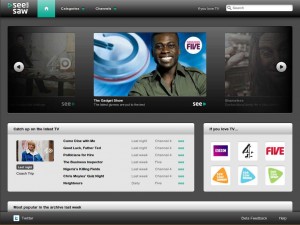 Seesaw is a UK-only video on demand service, which has its origins in the ill-fated Project Kangaroo, whose technology was bought up by transmission company Arqiva. The service was launched with new branding as “SeeSaw”.
Seesaw is a UK-only video on demand service, which has its origins in the ill-fated Project Kangaroo, whose technology was bought up by transmission company Arqiva. The service was launched with new branding as “SeeSaw”. Back in August,
Back in August, 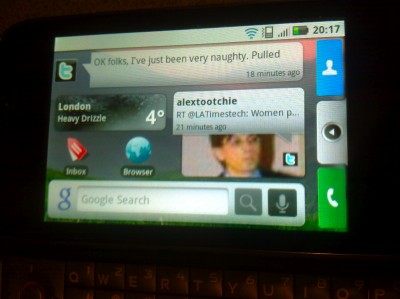 It seems that 2009 is the year of the comeback handset. Palm saw its
It seems that 2009 is the year of the comeback handset. Palm saw its  First, a quick confession: I had no intention of reviewing the HTC Tattoo. Why? On paper at least, it’s a poor man’s
First, a quick confession: I had no intention of reviewing the HTC Tattoo. Why? On paper at least, it’s a poor man’s 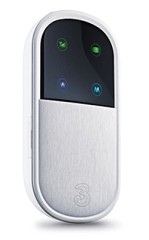 I’ll admit that when I first heard about
I’ll admit that when I first heard about 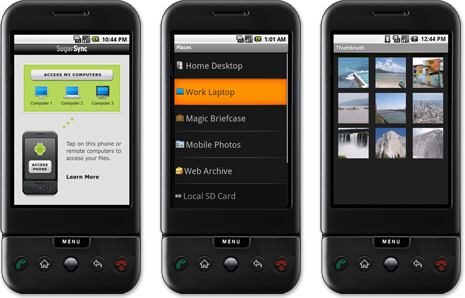
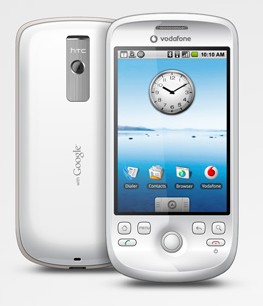 It goes by many names. The HTC Magic on Vodafone here in the UK, Google Ion, when handed out as a freebie at the search giant’s developer conference, and the myTouch 3G on T-Mobile in the states. But, whichever way you slice it, the second Android-powered Google phone, manufactured by HTC, is an improvement over the original T-Mobile G1 in almost every way.
It goes by many names. The HTC Magic on Vodafone here in the UK, Google Ion, when handed out as a freebie at the search giant’s developer conference, and the myTouch 3G on T-Mobile in the states. But, whichever way you slice it, the second Android-powered Google phone, manufactured by HTC, is an improvement over the original T-Mobile G1 in almost every way.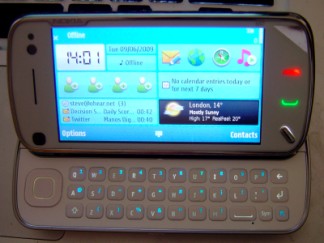 Having only had around
Having only had around 
